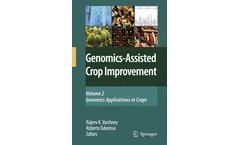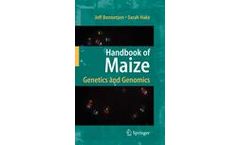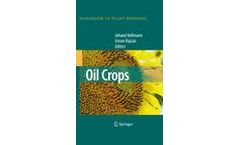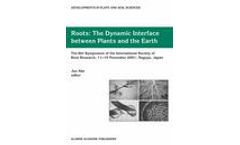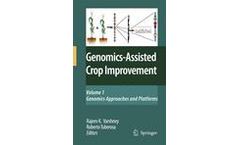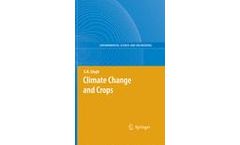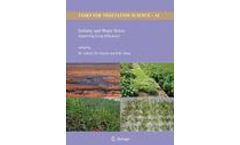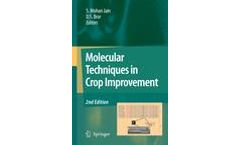Refine by
crop-science books
13 books found
The volume contains 10 state-of-the-art reviews of developments in specific areas of tropical agroforestry research during the past two decades, prepared by acknowledged world leaders in the respective topics, following their presentations at a one-day symposium held in connection with the annual meetings of the tri-societies of American Society of Agronomy, Crop ...
The glossary contains 1380 terms covering crop breeding, genetics, and cytology; crop physiology and metabolism; crop ecology, production, and management; seed physiology, production, and technology; crop quality and utilization; turfgrass; and forages. Also included is an appendix on terms used in cell biology and molecular ...
Save! Buy the two-book set at additional savings! This set provide a complete grass reference for the classroom, practitioners, crop and soil scientists, ornamental horticulturists, turf specialists, and ...
An in-depth reference for the major cool-season forage grasses, this publication is unique in that it addresses such a large number of species in terms of their role in agriculture and conservation as well as their management. Educators and students, crop and soil scientists, ornamental horticulturists, turf specialists, and environmentalists and conservationists will find the book to be a ...
This is the only book to integrate seed technology and the production of agronomic species. It covers the principles and practices involved in producing, conditioning, evaluating, and marketing high quality seeds. The current seed production technology for each species is reviewed, including seeding methods; weed, insect and disease control; roguing and purification; harvesting, ...
Genomics research has great potential to revolutionize the discipline of plant breeding. This two-volume set provides a critical assessment of genomics tools and approaches for crop breeding. Volume 1, entitled "Genomics Approaches and Platforms", illustrates state-of-the-art genomics approaches and platforms presently available for crop improvement. Volume 2, entitled "Genomics Applications in ...
Maize is one of the world’s highest value crops, with a multibillion dollar annual contribution to agriculture. The great adaptability and high yields available for maize as a food, feed and forage crop have led to its current production on over 140 million hectares worldwide, with acreage continuing to grow at the expense of other crops. In terms of tons of cereal grain produced worldwide, maize ...
The volume on oil crop breeding is the third volume in the series, Handbook of Plant Breeding after the initial volumes on Vegetables and Cereals. Like the other volumes in the series, the volume will present information on the latest in applied plant breeding using the current advances in the field. The book consists of a total number of 19 chapters, with 17 being devoted to individual crops and ...
The root is the organ that functions as the interface between the plant and the earth environment. Many human management practices involving crops, forests and natural vegetation also affect plant growth through the soil and roots. Understanding the morphology and function of roots from the cellular level to the level of the whole root system is required for both plant production and ...
Genomics research has great potential to revolutionize the discipline of plant breeding in order to realize the future needs of an ever growing human population. Several high-throughput approaches, genomics platforms and strategies are currently available for applying genomics to crop breeding. However, high costs invested in/associated with genomics research currently limit the implementation of ...
Climate change is directly linked to the human activities, according to the Fourth Assessment Report of IPCC (2007). In last two decades of 20th Century, accelerated anthropogenic activities pushed up the atmospheric abundance of greenhouse gases, mainly CO2, CH4, and N2O, alarmingly which enhanced the radiative forcing of the Earth’s surface and thus perturbed its heat radiation balance. As a ...
Salinity and water stress limit crop productivity worldwide and generate substantial economic losses each year, yet innovative research on crop and natural resource management can reveal cost-effective ways in which farmers can increase both their productivity and their income. Presenting recent research findings on salt stress, water stress and stress-adapted plants, this book offers insights ...
The first edition of this book, "Molecular techniques in crop improvement" published in 2002 provided comprehensive information on the latest tools and techniques of molecular genetics and applications in crop improvement, and highlighted molecular genetics from the perspective of plant breeders. Since then, major advances have been made in molecular tagging of genes/QTLs governing complex ...


